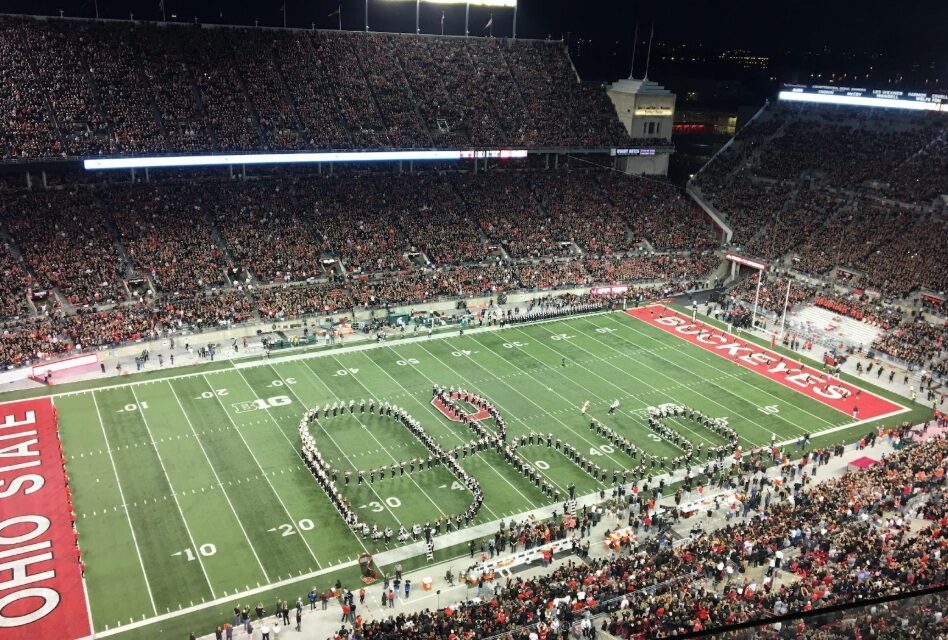The weight room at Ohio State’s Woody Hayes Athletic Center presented a problem. As the Buckeyes began winter workouts following their national championship, the space was adorned with celebratory photos, championship logos, and constant reminders of last season’s success. For many programs, these would be welcomed motivational elements—but not for a defense under new leadership.
“You have to reset at some point,” explained All-American safety Caleb Downs. “The new guys that walked in haven’t earned anything. We as the new 2025-26 team haven’t earned anything. So we can’t take credit for anything that’s up on the banners.”
This reset mentality—encouraged by new defensive coordinator Matt Patricia—marks a significant philosophical shift for a program that could easily rest on last season’s championship laurels. Rather than trying to simply maintain the standard set by last year’s top-ranked defense, Patricia is fostering a completely fresh identity for his unit—one that acknowledges the past while focusing on creating something entirely new.
Starting Fresh, Not Starting Over
Patricia’s reset approach isn’t about dismissing what made Ohio State’s defense successful. Rather, it’s about creating psychological separation between past accomplishments and present challenges.
“That run solidified that the culture works, the system works,” head coach Ryan Day noted, reflecting on the championship season. “It gave credibility to everything we’re doing.”
Patricia is building upon this cultural foundation while implementing his own defensive philosophy. The result is an interesting balance: maintaining the championship-level standards and expectations while encouraging players to forge their own identity rather than trying to replicate their predecessors.
This approach has proven particularly valuable for players stepping into larger roles. Rather than feeling pressure to be the “next Jack Sawyer” or “next Cody Simon,” players like C.J. Hicks and Arvell Reese are embracing opportunities to establish themselves on their own terms.
“That’s the goal,” Reese said about his plans to start at middle linebacker, demonstrating the confidence that comes from Patricia’s reset mentality.
New Voice, New Energy
Patricia’s arrival has brought a noticeable energy shift to Ohio State’s defensive meetings and practices. Described by linebackers coach James Laurinaitis as “authentically excited to be back in college football,” Patricia has infused the program with rejuvenated enthusiasm after taking a year away from coaching in 2024.
“You can tell there’s a yearning to get back to why you got into coaching—to impact young people and teach the game of football,” Laurinaitis observed. “The few times he’s been in front, talking to the guys, you can sense he’s excited to just teach ball.”
This fresh energy complements the reset mentality, creating an environment where both new and returning players feel part of something building rather than something being maintained. The psychological difference is subtle but significant—players are creating rather than preserving, building rather than protecting.
“I’m so excited to be here,” Patricia said during his first media appearance, his enthusiasm evident. “I know I’m probably going to say it a thousand times, but it’s really the truth.”
Redefining Defensive Roles
Perhaps the clearest manifestation of Patricia’s reset mentality is his willingness to reimagine player positions and responsibilities. He’s not simply replacing departed starters with like-for-like substitutes but reconsidering what each position means within his defensive philosophy.
C.J. Hicks’ move from linebacker to defensive end exemplifies this approach. Rather than trying to fit Hicks into the same linebacker role he held for three seasons, Matt Patricia identified his pass-rushing potential and created a new opportunity that better leverages his specific talents.
“The change to edge allows me to be more aggressive,” Hicks explained, embracing his redefined role.
Similarly, Patricia isn’t asking Lorenzo Styles Jr. to simply replace Jordan Hancock at nickel back, but is reimagining how that position functions within the overall defensive scheme. This approach creates space for players to establish their own legacy rather than living in the shadow of their predecessors.
“Do we just have 11 starters? No, we have starters in a multitude of packaging,” safeties coach Matt Guerrieri explained, highlighting how Patricia’s system creates unique opportunities for players across the roster.
The Psychological Advantage
The reset mentality offers significant psychological benefits for a defense replacing eight starters. Rather than measuring themselves against last year’s experienced unit—a comparison that would inevitably fall short during early development—this year’s defense is focused on their own growth trajectory.
“I just want to teach,” Patricia noted about his current focus. “I want to mentor, but really, right now, I’ve got to learn. I’ve got to listen. Right now, I feel like I’m the student.”
This humility from the coordinator permeates the defensive culture, creating an environment where growth and development take precedence over immediate perfection. Players feel empowered to embrace new roles, experiment with techniques, and develop at their own pace rather than feeling pressure to immediately match last year’s championship standard.
Building Toward a New Identity
As spring practice concludes and summer workouts begin, Patricia’s reset mentality continues shaping Ohio State’s evolving defensive identity. Rather than being defined by what they lost—eight NFL-bound starters—this defense is increasingly defined by what they’re building: a multiple, flexible unit that maximizes individual talents within a cohesive system.
“Personnel was always the biggest thing,” Patricia said, reflecting on his defensive philosophy. “Who do we have? Who are the best 11 guys we can put on the field to help us win this week?”
This focus on present personnel rather than past comparisons embodies the reset mentality Patricia has established. The defense isn’t trying to replicate what worked last year but discovering what will work with this year’s personnel.
For a program defending a national championship with significant defensive turnover, this psychological approach might prove as valuable as any tactical adjustment. By embracing the reset mentality, Ohio State’s defense has freed itself from the burden of comparison, creating space to develop a new championship identity all their own.


